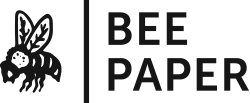
December 13, 2018
Making Freelance For You
By Dave Carleson
Written by Dave Carleson
Concept Illustrator Dave Carleson @draw_r reminds fellow freelance artists to avoid comparison and stay passionate while doing commissioned work outside their artistic comfort zones in the newest Bee Paper blog.
No matter what you're working on, you need to be excited about it, so be sure there’s an element in it that fuels and challenges you. Practicing this frequently yields art that is, not only distinctly "me", but is clearly curated with passion, and I’m sure my clients notice this.
Frustrating Freelance
Most of the artists I know have experienced some amount of frustration with freelance work. It could stem from unending edit requests, indecisive or wishy-washy creative directors, or just simply uninspiring subject matter. Personally, I can’t count the number of times that a client has pressed the dreaded “merge button”. This is when they can’t decide between two or more options you’ve given them and they figure a mash-up of all ideas will create the best product.
Of course, these frustrating experiences are in no way limited to freelance work, I think it’s safe to assume that no matter what we do for work we’ve all had challenges to overcome.
Bittersweet Social Media
We live in an interesting time. Never before have we had such quick access to a broad spectrum of art. We can find virtually anything by anyone in a matter of seconds. But, in my opinion, this is a double-edged sword. Sure, that painting you came across on Pinterest is fantastic. The artist really captured the light and mood of the scene. Hopefully, you feel inspired by their work, rather than feel deflated by it because you don’t think your own work equals or exceeds its quality.
The same goes for Instagram. I love seeing an incredibly impressive sketches show up in my feed, and I am truly inspired by so many artists. However, I have to constantly remind myself that even though the work may be amazing, I have no idea how much time the artist took to make that piece. I often don’t know which, if any, references they used or even how long they’ve been illustrating. Without that context, none of us should be trying to make those comparisons between our work and others’ work. Even with all those questions answered, I don’t think one artist should be judged against another. We are all so unique and we should certainly celebrate that every chance we get.
It is tough to avoid comparison. With so much amazing art at our fingertips, where do we personally fit in? The answer is certainly different for everyone. For me, I just want to feel like I’m moving forward with my art by learning new techniques and creating work that I am proud of.
Searching for Silver Linings
Most of us want to be proud of all the art we make, whether it’s for a giant corporation or for ourselves. Even if the type of art requested is not something we would typically create, we want to be able to look at it and not cringe. When I’m having one of those frustrating freelance moments, where it feels like I’m sinking into a bog of potentially cringeworthy final art, I try to remind myself to make some aspect of the project for myself. This can mean many different things. Sometimes it’s challenging myself to beat an internal self-made deadline or take the old “under promise, over deliver” approach. Other times, it could be adding appropriate details I personally enjoy drawing, such as mechanical objects and organic textures. Often, I will make it a point to really buckle down on ink strokes and strive to top my previous illustrations.
There are countless ways to find aspects of any frustrating project that you can be proud of by the time final art is locked. To put simply, the goal is that when you hand off your work to the client, you can do so proudly and feel, not only that you exceeded their expectations, but also that you improved as an artist.
A Unique and Never-Ending Journey
Improving as an artist is a constant process. A lot of people say improvement is something easily gauged by comparing your art to other successful artists. Conversely, I believe improving your art involves posing these questions to yourself: Are you happy with what you’re creating? Do you feel like you’ve grown stagnant, or are you pushing yourself in directions that fuel, challenge and excite you?

